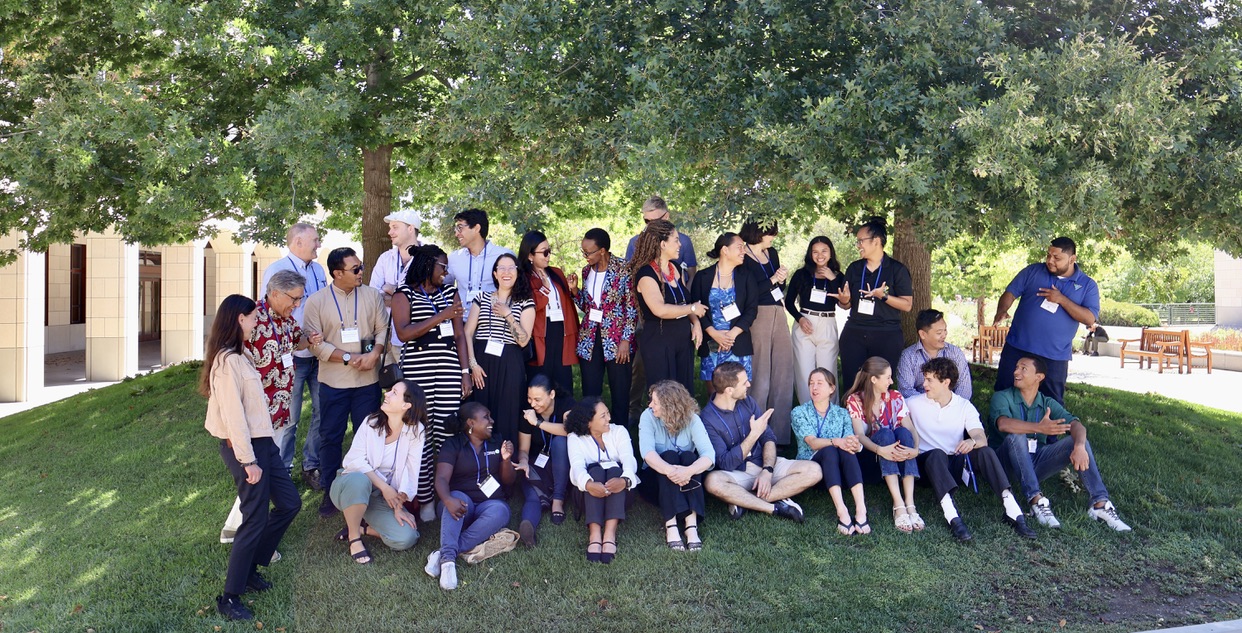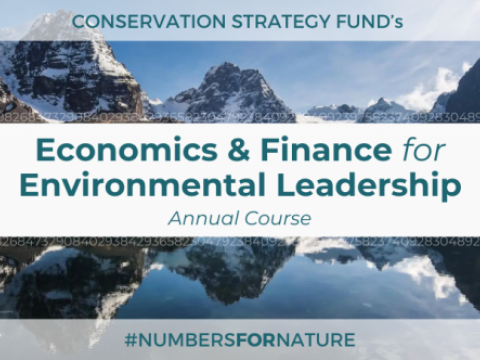Inspired by Economics: Training Leaders to Put Nature at the Heart of Decisions
CSF Brings Environmental Leadership Course Back to Stanford
“Inspired is the primary word I will use.”
That sentiment, shared by multiple participants in this year’s Economics & Finance for Environmental Leadership course, captures the spirit of an experience that has become a cornerstone of global conservation leadership.
The weekend of August 18th, 28 leaders from 19 different countries and 26 organizations travelled across the world to Stanford University’s campus in Palo Alto, California for what would become a transformative, energizing, and inspiring experience for everyone involved.
Back in-person for the first time in five years, CSF’s longest-running program brought together economists, entrepreneurs, Indigenous leaders, natural resource managers, policymakers, government officials, fundraisers, and conservationists, each determined to strengthen the economic case for protecting nature.

Lessons That Last a Lifetime
The program equips participants to:
- Apply economic theory to conservation challenges
- Value ecosystem services and assess trade-offs in land and resource use.
- Conduct cost-benefit analyses that integrate environmental and social dimensions.
- Explore finance solutions for conservation, from public policy tools to emerging market-based approaches.
For Delwin, who is working on Belize’s first marine spatial planning project, the impact was unforgettable: “Overall I feel honored and inspired…I will never forget this experience. When they say you can’t put a price on something, I feel you can’t put a price on this experience. I’m learning a little bit from everyone, and it’s inspiring me to learn more about natural capital and ecosystem services valuation.”
Fighting for Nature, Together
Fighting for nature can be a lonely task. The challenges we’re facing are complex, expensive, and can be overwhelming for any one individual. One of the greatest gifts of this course is the community CSF welcomes the participants into: one of collaboration and connection. When we have our peers next to us, our friends learning with us, our leaders fighting beside each other, we are emboldened to continue our long journey towards a safe and sustainable future for the next generation.
“I often feel alone in my work. But now, I know I am not alone,” reflected one participant, Tara Scarborough, Chief Resilience Officer at the Coastal Zone Management Authority and Institute in Belize. She described her highlight as the opportunity “to be in a space with people from over 20 different countries… brilliant superstars in their own right. We would have never met each other or known about the impactful work we do. Having that space where we can all connect — alongside the amazing lecturers and wealth of knowledge — has been the biggest highlight for me.”
This spirit of solidarity runs through the course: participants not only build technical expertise but also forge a community of practice that continues to support them long after they leave Stanford.
From Local Wisdom to Global Leadership
For Melanie Dalziel, who leads biodiversity and biosecurity management for her iwi (indigenous tribe) in New Zealand, the course offered tools to bridge culture, ecology, and economics.
“In New Zealand we have a whakataukī, or proverb: If our land is well, our people are well. To me, being here is about ensuring that our land is well so that the long-term sustainability of us as Māori — as tangata whenua (people of the land) — will be well.”
Her leadership embodies kaitiakitanga — guardianship of land, water, and sky — strengthened by the ability to understand and apply economic analysis to conservation choices.
A Legacy of Economics for Conservation
The inspiration behind the course traces back to 1997, when CSF founder John Reid realized that conservationists needed more than biology and passion to protect biodiversity — they needed economics. “Conserving without knowing the economic forces,” he observed, “would be like trying to move silently through a dark room full of furniture.” He realized that colleagues across the conservationist spectrum needed to be shown that an understanding of economics was indispensable for them to craft cost-effective conservation proposals, critique and change big development projects and propose community-scale development that was financially viable.
That insight led to the creation of Conservation Strategy Fund in 1998 and the launch of a training program that has since reached nearly 7,000 conservation leaders worldwide.
Lilian Wawa - who joined the cohort after enjoying a previous virtual training from CSF - is the Senior Assistant Commissioner at Tanzania Wildlife Management Authority. Working every day on human-wildlife conflict, and personally motivated to restore the ecosystems she remembers as vibrant during her childhood in Northern Tanzania, Lilian had never been to the United States before, and found the course immensely interesting and immediately practical. She came to the same realization that CSF’s Founder, John Reid had nearly 30 years ago: “I'm very grateful for CSF. I feel indebted and I feel honoured that I get this chance to participate in this in-person course. I'm going to be a good ambassador. Because I want everyone in the conservation arena to get the concept of economics. Because we are all zoology, conservation and the like… but we should factor in economics: how decisions are made and why."
Building a Movement
Today, CSF sustains ecosystems and human communities through strategies powered by conservation economics and finance. Its training makes development smarter, quantifies the benefits of nature, and creates enduring incentives for conservation.
The Stanford-based course remains its flagship program, not only for the technical rigor and the transformative nature of understanding the economic “language” behind many development and conservation decisions, but for the sense of hope it instills. As one participant summed it up: “Inspired is the primary word I will use. The professors come with a level of knowledge that will set a permanent print.”
For participants like Tara, Delwin, Melanie, Lilian, and hundreds of alumni before them, the course is not just about upskilling themselves, it’s about finding allies, building confidence, and remembering that while fighting for nature can feel lonely, no one is fighting alone.
Learn more about our courses and find free resources at www.numbersfornature.org.
This course was hosted by Conservation Strategy Fund in collaboration with Stanford’s Natural Capital Project and the Conservation Finance Alliance. Special thanks to the Dry Creek Foundation for providing our participants with scholarship support for this course.
- Log in to post comments

